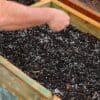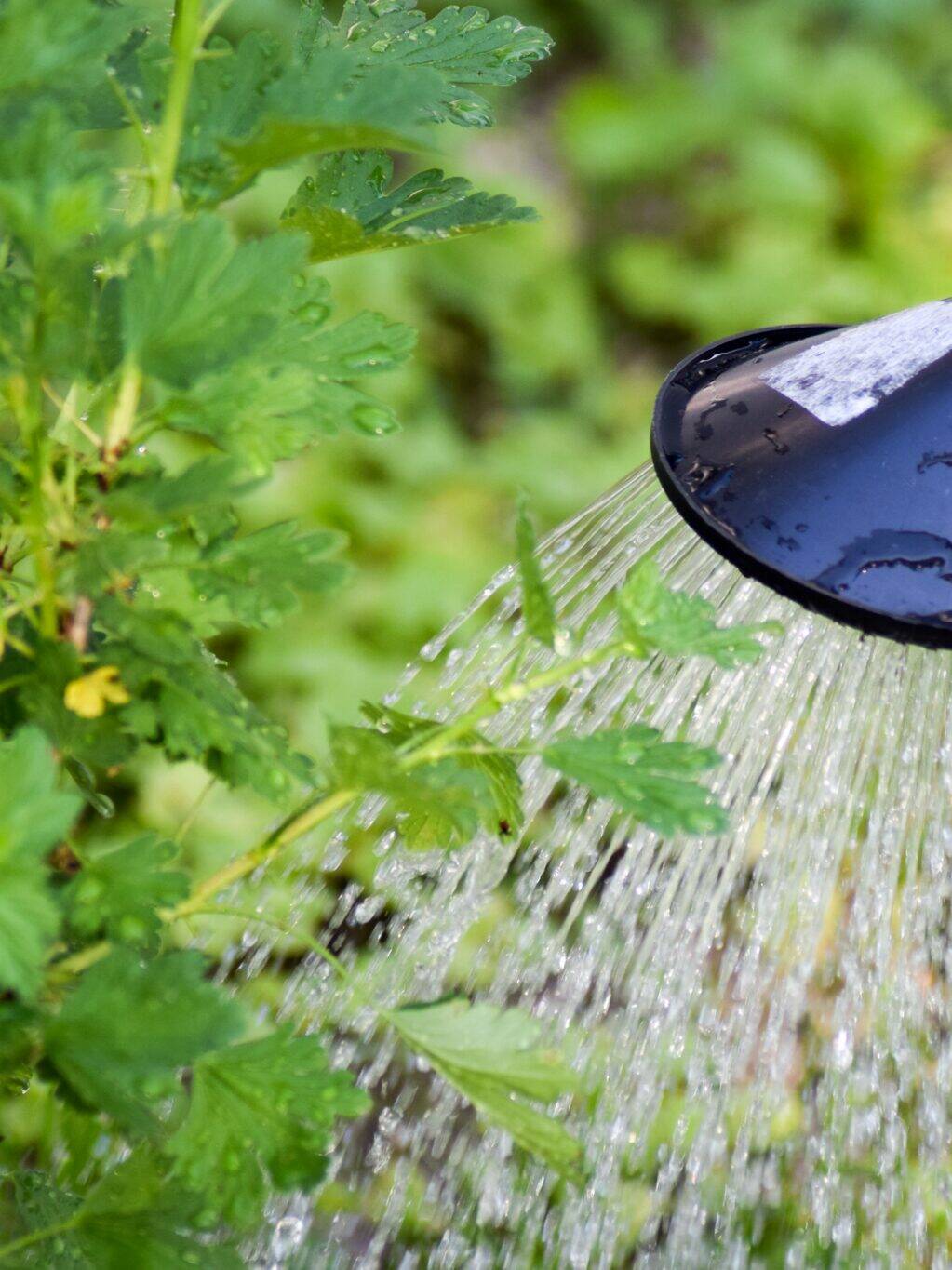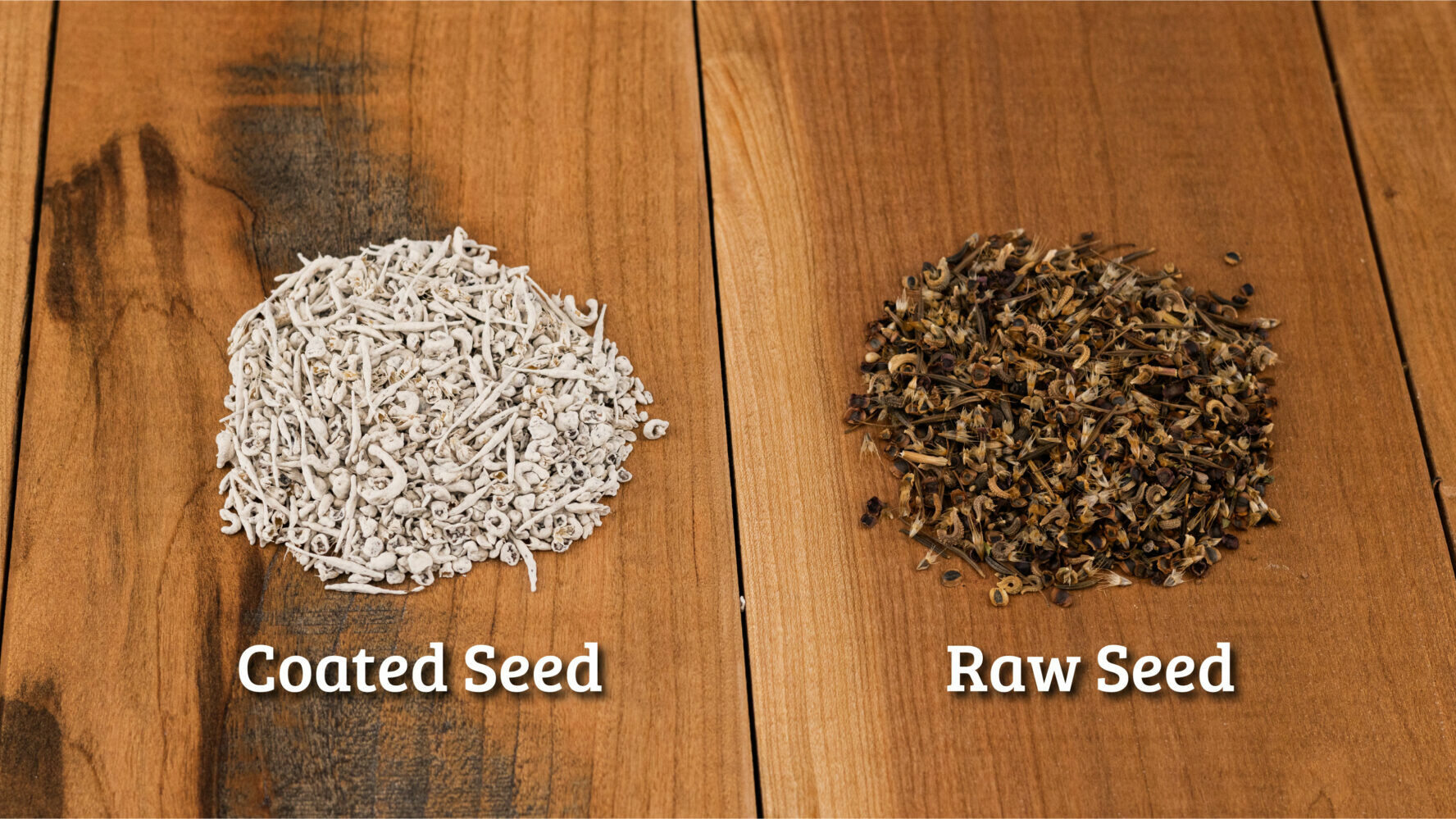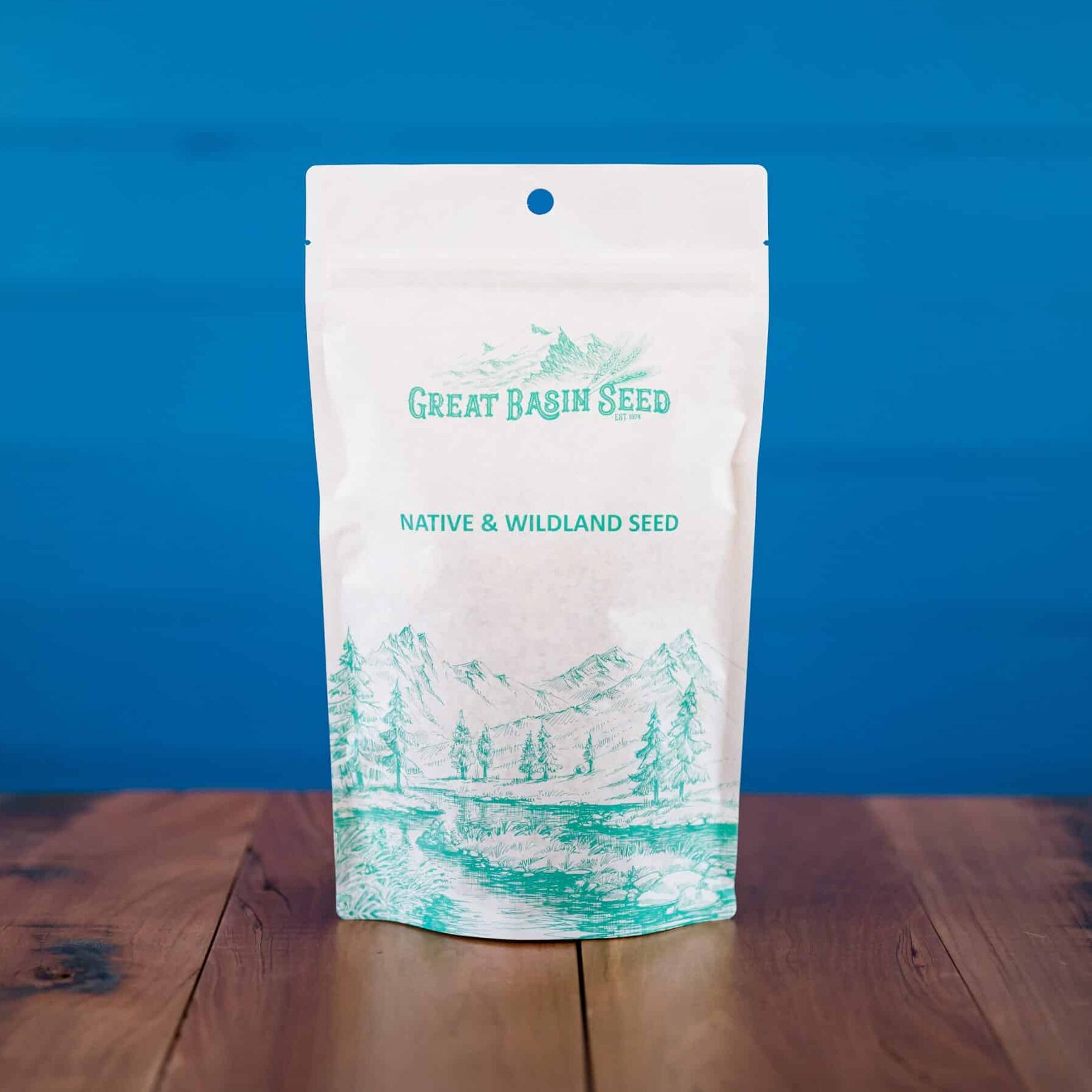Xeriscape Wildflower Mix
 $9.95 – $40.25
$9.95 – $40.25 - Mix of annuals and perennials that grow back year after year
- Formulated for the Great Basin & Intermountain West
- Mixture for Xeriscape landscaping and ground cover
- Contains native and non-native species
- Conserves water
- Reduced maintenance and underutilized lawns
- Approximately 325,000 seeds per pound
- Covers up to 8,000 square feet
- Pinnacle-coated for improved germination
Our Xeriscape Seed Mix is designed for arid ecosystems and xeriscape landscaping in the Western U.S. It contains native, drought-tolerant wildflowers that require less water than traditional landscape plants. It is for areas in the western United States and southwest Canada where water conservation is desired.
Adapted for hot, dry summers and cold winters.
Xeriscape Wildflower Mix is used for ornamental landscaping, ground cover, and valley and foothill beautification in the western United States. It’s a mix of annuals and perennials that keep on provide you with beautiful wildflowers ever year. Annuals are prolific seed producers and will re-seed themselves annually, whereas perennials will grow back from the root-clump year after year. Throughout the growing season, flowers will add color to your Xeriscape landscaping.
About Xeriscape Landscaping
Xeriscape landscaping was developed for drought-prone locations or water-conserving properties. It is being used more and more in commercial and residential areas to replace lawns in places where water conservation is important. Xeriscaping uses drought-tolerant, often native plants to save water and reduce yard waste. Landscapes need to be planned to work with the water, soil types, and sunlight that are available in the area.
Xeriscape not Zeroscape
“Xeriscape” is often spoken as though it begins with Z, leading to the typo zeroscape (as if it signified “zero landscaping”). This is problematic since “zero” makes us think of a barren landscape.
Desert Plants and Xeriscape
Xeriscape landscaping isn’t confined to barren desert vegetation. In non-desert settings, the method allows you to employ a range of appealing plants but demands on water-saving practices, such as combining plants with comparable water needs. This saves money, conserves water, and saves your plants from over-watering.
COATED WILDFLOWER SEEDS IN ACTION
Watch Noah explain the benefits of seed coating and the dramatic improvements our wildflower mixes!
Tip #1 : Gentle Water
To prevent seeds from being dislodged or washed out, begin establishment by watering with a rain can or some other form of gentle application. Avoid watering directly with a garden hose. For large areas, gentle sprinkler application is acceptable.
Tip #2 : Maintain soil integrity
Continue gentle water application after plant emergence. Tender seedlings are susceptible to soil disturbance, and roots can be easily broken-off or dislodged.
Tip #3 : Attentive water schedule
Water once a day for at least four weeks. Wet or humid climates may require less. Arid climates may require twice daily. Once establishment has begun and plants are 3-4 inches tall, slowly transition from high-frequency low-duration watering to low-frequency high-duration watering.
Benefits of Coated Wildflower Seeds
Great Basin Seed wildflower mixes are coated for a number of sowing and establishment enhancements:
Seeds Wont Blow Away
Nature has designed many wildflower seeds to cary on the wind. Coated seed stays where you put it.
You Can See Where You've Sown
Wildflower seeds are earth-tones and raw seed is difficult to see. Bright colored coated seed means you can see where seed is sown.
Deters Birds and Rodents
Seed coating makes seed unrecognizable to rodents and birds and coating deters them from eating it.
Improved Seed Distribution
Brightly colored coated seeds aids in even seed distribution, and even allows you to sow heavy in some spots, lighter in others.
Germination & Establishment
Coating holds water and protects tender seedlings during germination, enhancing establishment and stand density.
Reduced Seeding Rate & Savings!
Increased germination rates mean fewer seed can be sown. Higher plant density is achieved with coated seed.
Benefits of seed coating are well documented, and it saves you $$$
Seed coatings offer a number of significant benefits over raw seed. These benefits are evident in the application of seed (sowing) and in the development of the seed once it is planted. Other sectors of the seed industry have been applying coating to seeds for decades with great results. The benefits are well documented.
Beat the Wind: Mother nature has created brilliant and intriguing methods of disbursing seed. Many wildflowers have plumes or hairs that catch wind and spread them, sometimes miles away. This is a great attribute for the survival of a species. It’s not so great if you want your flower seeds to stay in place! Seed coating flattens the plumes and hairs and helps seed stay in place. Additionally, the coating makes the seed heavier so it resists movement and “sets” more firmly in the soil surface. These characteristics all enhance germination and result in more plants per square foot – and healthier plants, too!
See where you’ve sown: Raw (raw = not coated) wildflower seeds are earth tone colors. Some wildflower seeds are the same size as a grain of sand, making them even more difficult to see. When they are spread on the ground they are nearly invisible. A consequence of that is that wildflower mixes are frequently either over-seeded (too much seed) or under-seeded (not enough seed) or are sown in mosaics and patches. Our wildflower mixes are coated with bright colors that contrast with the ground so you can see exactly where you’ve spread seed and can adjust density to your liking. The result is an even stand of wildflowers, and you don’t waste seed!
Deter Birds and Rodents: Seeds are the primary food source for most birds and rodents. They can carry away a considerable percentage of your seeds, leaving you a thinned-out, weak stand of flowers. Coating can deter birds and rodents from eating your seeds in two ways; the seed is camouflaged under the seed coating and it no longer looks like a seed, and it resembles a dirt clod.
Better Germination and Establishment: Seed coating improves the viability, vigor and longevity of seedlings and plants. Because coating sets the seed firmly in the soil, roots achieve faster and more stable contact with the earth. This allows the plants to rapidly draw nutrients from outside the seed. Coating absorbs and holds moisture, reducing the chance they dry out during emergence. When plants start strong, they stay strong, and the longevity and quality of your flowers are improved once the plants are grown.
SAVE MONEY!: Sometimes less is more, and when you coat seed less is definitely more. Because of the attributes mentioned above you get higher stand density (more plants per square feet) with less seed because more seeds germinate and emerge into healthy plants. With coated alfalfa, for example, most farmers achieve the same stand density with 10-12 pounds of coated seed that they achieve with 18-20 pounds of raw seed. In our trials, we achieved 50% more stand density with coated wildflower seeds than with raw seed. This means that you can cover the same area with half as much seed, saving you considerable money!
SOW LESS SEED PER SQUARE FOOT
ACHEIVE HIGHER STAND DENSITY
SAVE MONEY, GET BETTER RESULTS
less seed, better results
STRONGER SEEDBETTER RESULTS
Coating has proven to enhance the survivability, vigor and persistence of seed. This means you can sow LESS seed per square foot and get BETTER results.
SURVIVABILITY
Many seeds die in the initial phases of the germination process as a result of poor ground contact, insufficient water, wind and exposure. Coating anchors the seed to the ground and holds water, resulting in more successful plants.
SEEDLING VIGOR
Vigor is how strong a seedling is once it sprouts. Coating encapsulates the seed and fosters an environment where seeds can quickly begin pull nutrients from the ground, improving vigor and longevity.
PERSISTANCE
Persistance is the survival of seeds once they have established. Plants that start strong stay strong, resulting in healthy, dense stands of wildflowers.
the right seed density
DETERMINE YOURSEEDING RATE
Your seeding rate will be determined by your goals and the planting site, but we can give you a few pointers…
BASE SEEDING RATE
The base rate for wildflower mixes is 1 pound per every 8,000 square feet. Increase the seeding rate for higher stand density.
NATURALIZED, OPEN AREAS
Naturalized and open areas are usually larger areas of a yard or planting site where lower plant density is desired. Foot and pet traffic will often go through these areas and plant density is low enough that the flowers are not trampled and feet are not tangled. Plant density may be as low as a few plants per square foot. These areas are usually not manicured and flowers are desired as much for ground cover and weed competition as for beauty and aesthetics. A planting rate of 1 pound per 8,000 square feet is sufficient in these areas. Increase your planting rate to your desired aesthetic.
FLOWER BEDS, PLANTER BOXES
Heavier plant density is generally desired in manicured flower beds and planter boxes. Foot traffic usually goes around these kinds of planting sites, not through them. These are usually areas that are smaller than 2,000 square feet. Plant density will be very high with many plants per square foot. The planting rate shown in the photos at left approximates a seeding rate of 1 pound per 2,000 square feet.
Wildflower Mixes for Every Region
Regional wildflower mixes selected for your climate and growing conditions.
Who is Great Basin Seed?
Great Basin Seed is a seed company that specializes in seed sales and consultation for home, ranch, farm, range and reclamation. We have been a leader in the seed industry since 1974.
Our History
We've been in the seed business since 1974.
What We Offer
We offer seed for home, farm, ranch, range and reclamation projects.
Meet the Gang
We have the best employees in the world! We are proud of the work they do, and trust them to serve you!
Right: Company founder Lloyd and his wife Paula Stevens in a wildflower seed production field circa 1977
Arroyo Lupine – Lupinus succulentus
Blanketflower – Gaillardia aristata
California Poppy – Eschscholzia californica
Blue Flax – Linum perenne
California Bluebell – Phacelia campanularia
Rocky Mountain Penstemon – Penstemon strictus
Bird’s Eye – Gilia tricolor
Palmer Penstemon – Penstemon palmeri
Tidy-Tips – Layia platyglossa
Prairie Aster – Machaeranthera tanacetifolia
Pale Evening Primrose – Oenothera pallida
Prairie Coneflower – Ratibida columnifera
Deerhorn Clarkia – Monarda fistulosa
Greenthread – Thelesperma filifolium
Oregon Sunshine – Eriophyllum lanatum
Quick Plant Facts
| Select a Package Size and Quantity | 3 oz. Pouch (covers up to 500 sq. ft. ), 1 lb. Cotton Bag (covers up to 6,000 sq. ft.) |
|---|---|
| Elevation of Occurance: | |
| Growth Height: | |
| Min. Precipitation: | |
| Sun & Shade Tolerance: | Full sun, Partial shade |
| Planting Rate: | |
| pH Tolerance: | |
| Growth Season: | |
| Best Time to Sow: | |
| Max Sowing Depth: | |
| Plant Type: | |
| Lifespan: | |
| Origin: |
Establishment:
When you plant can vary based on your climate, rainfall patterns and the species you are planting. Generally speaking, However, annuals and perennials or annual/perennial mixes perform best when planted in spring, early summer or late fall. If fall planting is your method, plant late enough in the fall that your seeds remain dormant and do not germinate until spring. Perennials can be planted in early fall if there are at least 10-12 weeks of growing time before the plants go into winter dormancy. In mild climates plant during cooler months for best results.
Site Preparation:
For best results plant on cleared ground. Remove all weeds, grasses and existing vegetation before planting. Loosen compacted soil by scraping, tilling or scarifying. Tilling should be utilized only when soil is very compact. If soil is tilled, take care not to plant seeds deeper than 1/4 inch.
Planting Rate:
Wildflowers are generally plated at a rate of four to five pounds per acre, although it is not unusually to recommend or plant six to eight pounds per acre. A planting rate in the minimum range is usually sufficient to establish a good stand of wildflowers on prepared soil with adequate maintenance. The maximum rate is recommended when ideal soil preparation and weed control are not possible, or when a maximum display is required. Poor perennial establishment may result if the maximum seeding rate is exceeded, as the plants will compete with each other for real estate, water and sunlight.
Watering:
The watering cycle for establishing wildflowers is similar to establishing a new lawn. Keep the soil wet during the establishment process. Success is most likely to be achieved if you begin by watering in a high frequency – low duration pattern. This generally means watering at least once a day if seeds are sown early spring. Two waterings per day may be necessary in late spring and early summer plantings, or in arid climates. At approximately 4-5 weeks you can reduce the frequency of watering. Be mindful of your wildflowers during the hottest and most intense sun days and supplement with additional water when necessary. Early morning watering is best.


























